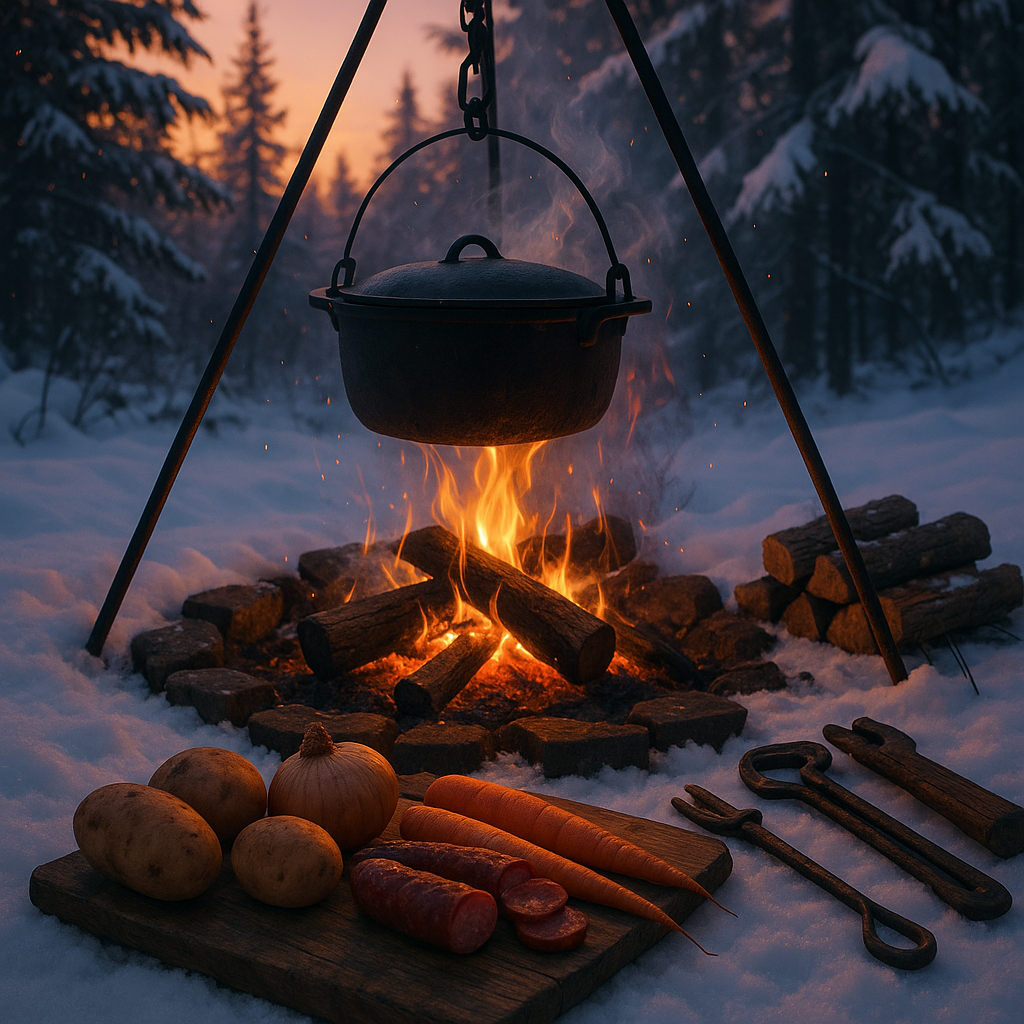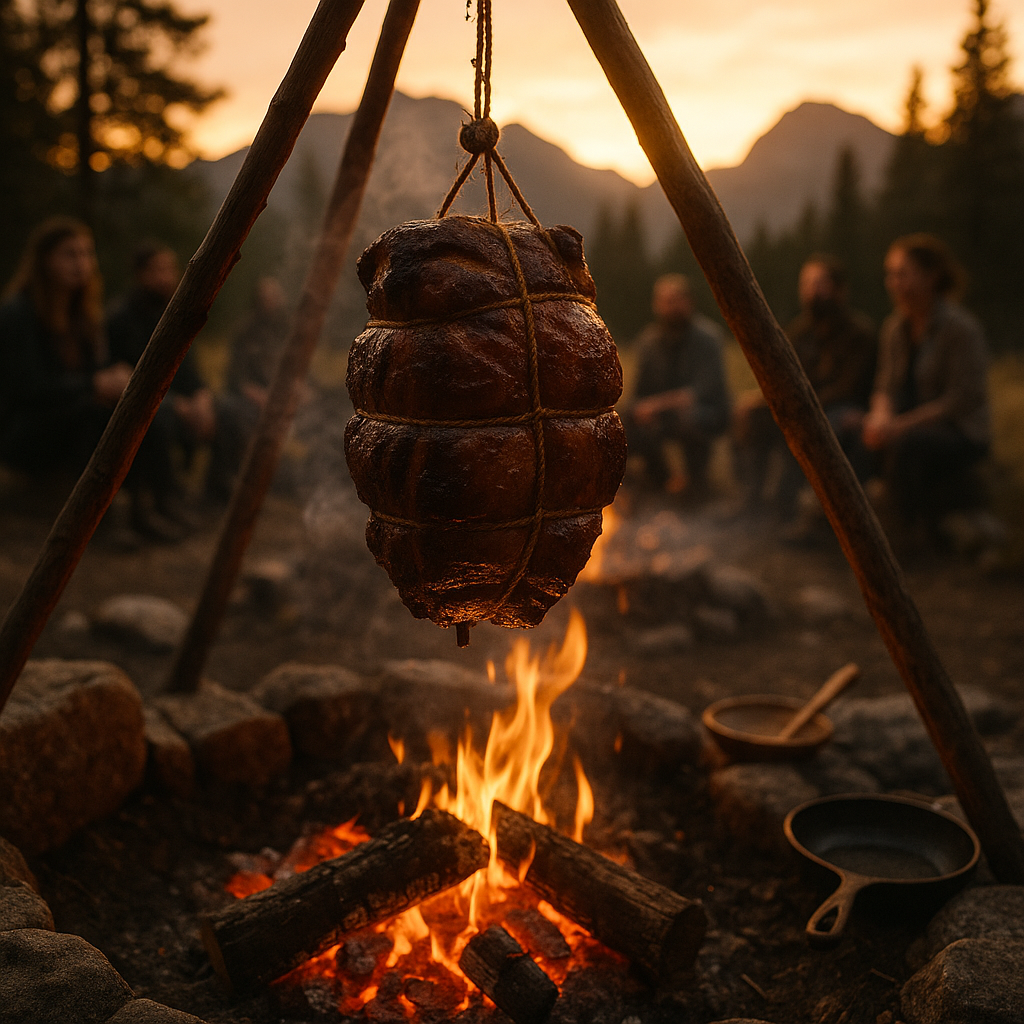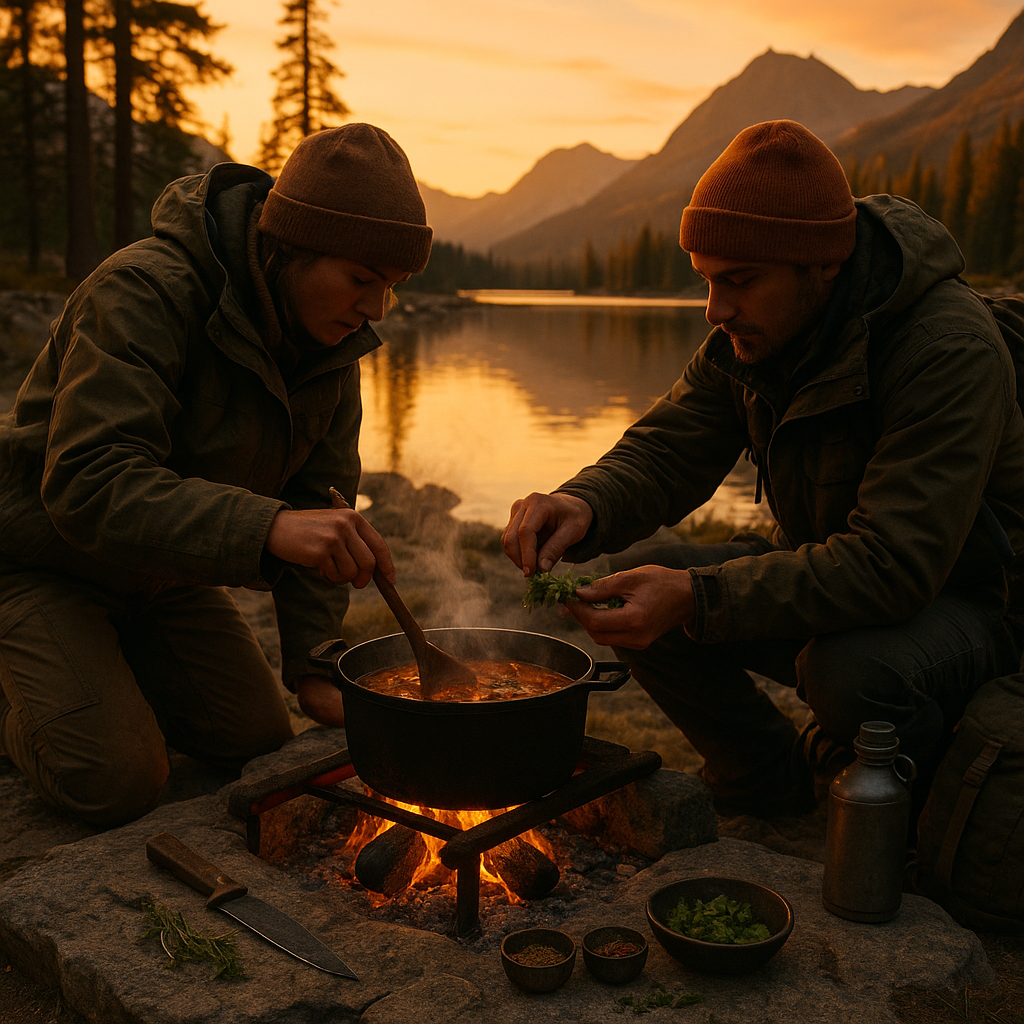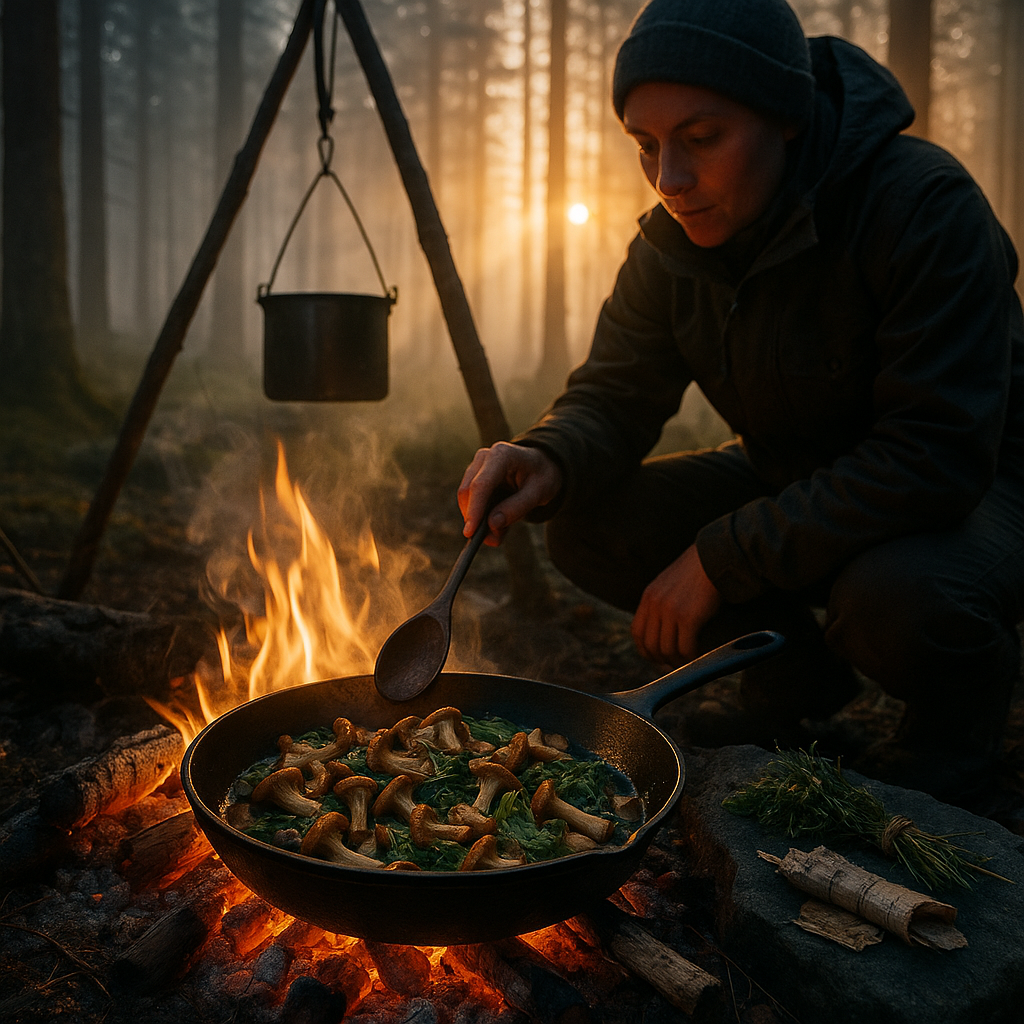Key Takeaways
- Master the art of fire in harsh winter conditions. Building and maintaining a cooking fire in snow requires specialized techniques, such as insulating your fire pit with stones or logs and selecting dry, seasoned wood for consistent, reliable heat.
- Embrace primal cooking with seasonal ingredients. Winter fire feasts shine when hearty cold-weather staples, like root vegetables, game meats, and foraged evergreen herbs, are cooked directly over open flames, infusing every bite with rustic, earthy flavors unique to the season.
- Connect with ancient traditions through fire festivals. Winter solstice gatherings and fire-fueled feasting have deep roots in global rituals, merging spiritual reverence with communal celebration. These traditions continue to inspire today’s winter fire feasts, fostering a sense of belonging and timeless connection.
- Safety first: respect the wilderness while cooking. Winter amplifies fire-related risks, so it is crucial to clear snow-packed perimeters, carry heat-proof gloves, and remain vigilant. Responsible practices protect both the wild and all who gather around the flames.
- Turn winter’s harshness into celebration. Far from mere survival, cooking with fire in the snow transforms bitter cold into a multisensory feast. It heightens flavors and turns the simple act of sharing food around the flames into a joyful ritual.
- Craft meaningful outdoor experiences with fire rituals. Rituals such as storytelling, toasting hot seasonal drinks, or honoring local traditions around the fire deepen the experience, fostering powerful bonds and memories rooted in winter’s embrace.
- Learn efficient snow cooking techniques. Adaptable tools, like tripod grills or fire-safe Dutch ovens, help manage uneven heating and unpredictable conditions, letting you savor hearty meals even in the most biting cold.
Winter fire feasts are more than culinary adventures; they are a bridge to the past, a celebration of nature, and a catalyst for meaningful moments among friends. In the following sections, you’ll unearth everything from ancient fire-making practices and modern innovations to the role of communal rituals, inspiring your own flame-lit odyssey in the snowy wilds.
Introduction
Few adventures evoke a sense of primal wonder like circling a crackling fire while snow drapes the evergreen boughs and the world hushes, wrapped in winter’s hush. Winter fire feasts transform the frost and chill into an invitation, coaxing soulful flavor from smoke and ember and weaving together tradition, skill, and celebration beneath rosy-lit skies.
To master a winter fire feast is to embark on a journey, one etched across centuries of ritual and resourcefulness, shaped by seasonal abundance and the alchemy of camaraderie beneath star-strewn branches. This is more than cooking over coals; it is a return to ancestral rhythms, a way to elevate rustic winter cuisine, and an opportunity to make even the coldest night pulse with memory, laughter, and the dance of flame.
The Ancient Art of Winter Fire Making
Winter, with its icy winds and deep drifts, has long tested the resolve and ingenuity of those seeking warmth and sustenance outdoors. In these moments, fire becomes both lifeline and rite of passage. The story of winter fire feasts begins with time-honored strategies, passed down through generations of survivalists and storytellers.
Stay Sharp. Stay Ahead.
Join our Telegram Channel for exclusive content, real insights,
engage with us and other members and get access to
insider updates, early news and top insights.
 Join the Channel
Join the Channel
Ancient fire makers understood that not all wood is created equal. They sought out dry, dead branches still clinging to standing trees, leaving behind the windfall dampened by snow’s grasp. Building a fire meant first creating a foundation, flat stones or green, snow-resistant logs, to raise the flames above icy ground, ensuring the fire would not slowly sag and die as the snow melted beneath it.
Across frozen northern forests and high-altitude meadows, people developed the “long fire.” This rectangular design, shielded on two sides and long enough to provide even heat, served as both warming hearth and versatile cooking platform. The technique endures because it works, allowing for efficient fuel use and consistent heat, even as bitter winds lash the open landscape.
Real-World Applications Across Industries
While these ancient lessons began with simple survival, their influence can be seen far beyond the backcountry campsite. In modern hospitality, restaurants and resorts draw on open-fire cooking to create immersive outdoor dining experiences throughout winter. In wilderness education, instructors teach these age-old methods as foundational skills, vital for search and rescue, disaster response, and environmental stewardship. Across environmental science, researchers study how traditional fire management techniques can promote forest health and reduce wildfire risk, even in snowy conditions.
Essential Tools and Preparations
Curating Your Cold-Weather Fire Starting Kit
A successful winter fire feast starts with deliberate preparation. No experienced winter cook heads into the wild with just matches and luck. The toolkit mirrors both ancestral wisdom and modern ingenuity, blending the best of old and new:
- Ferrocerium rods and sturdy strikers that spark reliably, even when wet and cold.
- Waxed cotton, birch bark, or state-of-the-art fire starters to ensure a stubborn flame, even when everything is sodden.
- Dry bark and twigs, especially from resin-rich trees like birch or cedar, act as nature’s waterproof kindling, easy to tuck inside a jacket for warmth.
- Heavy tarps serve double-duty: shielding your work area from snow and offering dry storage for your firewood and supplies.
These tools connect us to the rhythm of those who came before, when every object in the pack had a purpose, often more than one.
Essential Cooking Gear for Snow and Frost
Winter imposes challenges that test the mettle of even the most seasoned adventurers. Your choice of cooking equipment is crucial. Cast iron, time-honored and nearly indestructible, reigns supreme for snowy environments; its dense construction holds heat for even, reliable cooking, turning icy gusts into mere background noise.
Innovations like double-walled or insulated Dutch ovens lighten the load and quicken up slow-cooked stews, while collapsible tripod grills and sturdy steel grates lend nimbleness to your fire-cooked menu. Snow shovels shape windbreaks, hollowed logs create makeshift smokers, and local stones lend stability, grounding the alchemy of modern and ancient in a single meal.
Broader Relevance
In fields like disaster response and search-and-rescue operations, compact and adaptable fire-starting kits are life-saving. In outdoor education, these tools become a lesson in resourcefulness and resilience. Adventure tourism and glamping hosts invest in high-performance, weather-hardy cooking gear to ensure guest safety and satisfaction deep into the winter months.
Seasonal Ingredients and Preparation
Winter Foraging and Preservation
The richness of a winter fire feast is found as much in the ingredients as in the warmth of the flames. These meals celebrate the season’s hardiest fare: root vegetables that have sweetened in the cold, wild greens discovered beneath the snow, and preserves tucked away since autumn’s final harvest.
Preservation takes on a poetic role in winter. Meats slow-cured and smoked, pickled root vegetables, and fermented dairy sustain body and spirit alike. The cold acts as a natural fridge, deepening flavors and allowing traditional methods, from salt-curing to wind-drying, to flourish. This timeworn wisdom, paired with current food safety understanding, means winter cooks can confidently serve foods that carry both heritage and taste.
Adapting Recipes for Snow-Fired Flavor
Winter’s chill changes the rules of the kitchen. Recipes that require speed or delicate touches may falter in the face of wind and frost. Instead, cold-weather cooks lean on:
- Robust one-pot stews and braises that turn a handful of ingredients into feasts, maximizing both flavor and fuel.
- Dishes designed for longer, slower cooking, such as clay-baked roots or slow-roasted wild game, that yield deep flavors and radiant warmth.
- The creative marriage of preserved and foraged ingredients, weaving in everything from smoked fish to tart wild berries, for bold, nourishing meals that push back against the longest nights.
These strategies reflect a harmony of necessity, ingenuity, and culture.
Sector Applications
In health and nutrition, winter foraging fosters resilient, nutrient-dense eating. Outdoor educators and culinary schools highlight these skills to teach seasonality, sustainability, and self-sufficiency. Artisanal food brands and restaurants are reviving old-fashioned preservation methods, like cold-smoking and fermentation, as signatures of authenticity and care.
Cultural Traditions and Modern Practice
Fire Festivals Across Cultures
Fire has been the heartbeat of winter rituals throughout human history. From Scandinavian Jul fires that blaze against endless night, to indigenous North American ceremonies where flames honor both ancestors and the sun’s slow return, winter fire feasts are inseparable from cultural identity.
These ancient





Leave a Reply